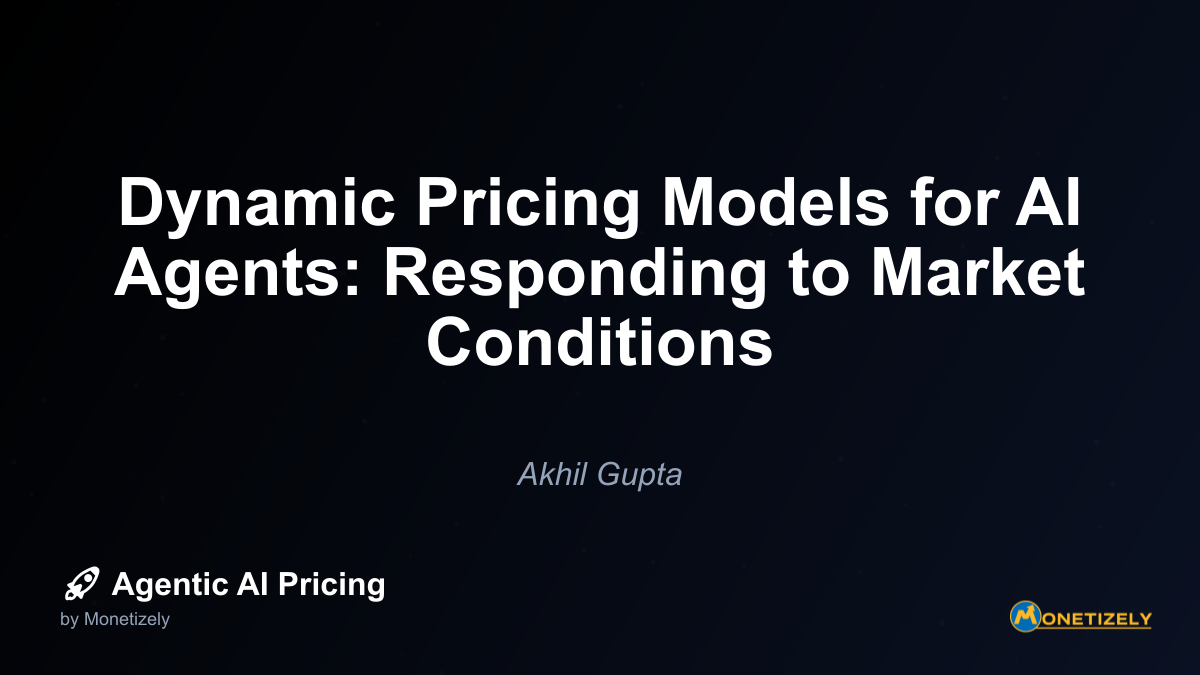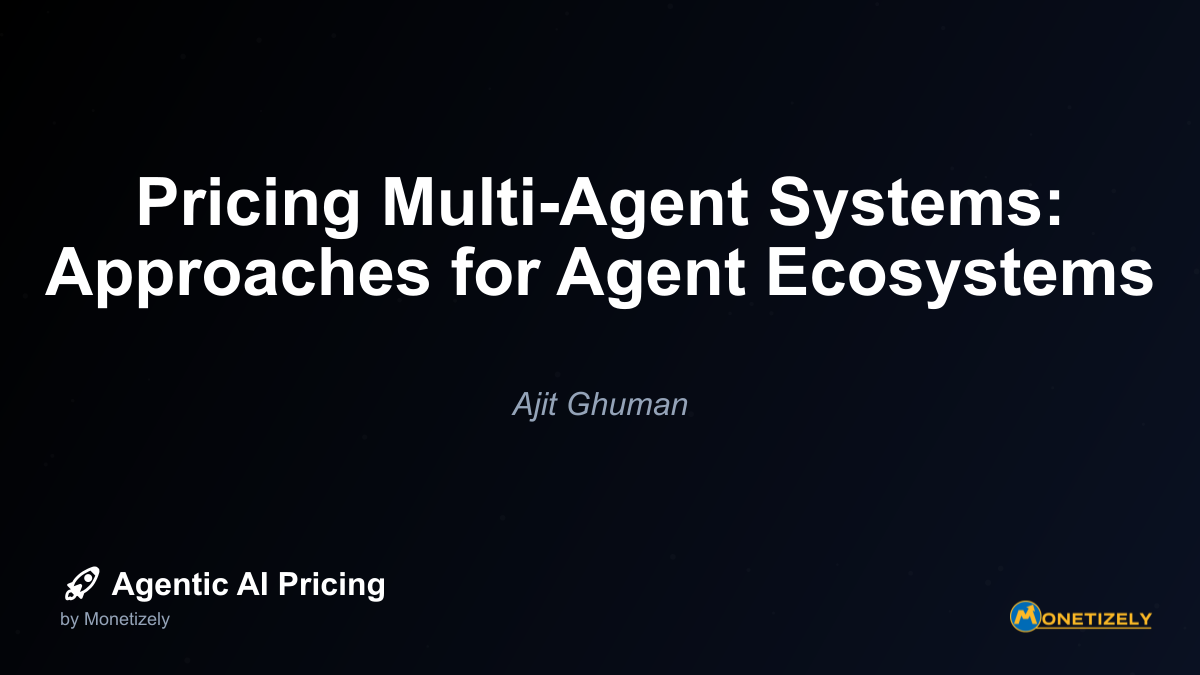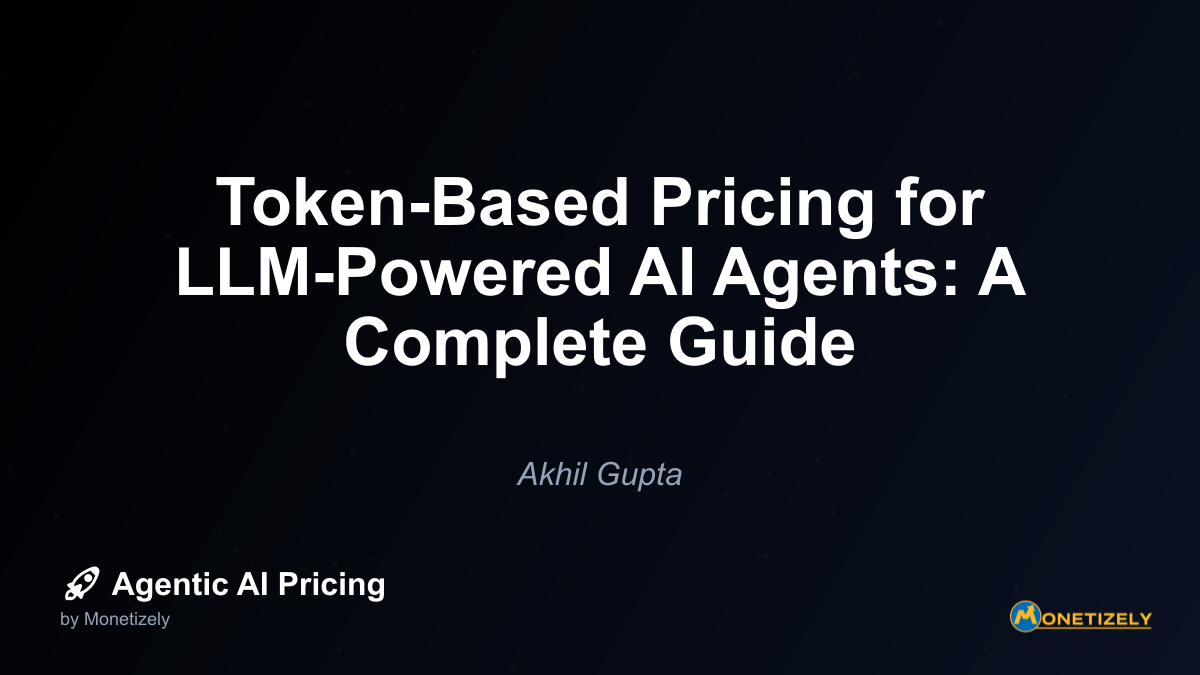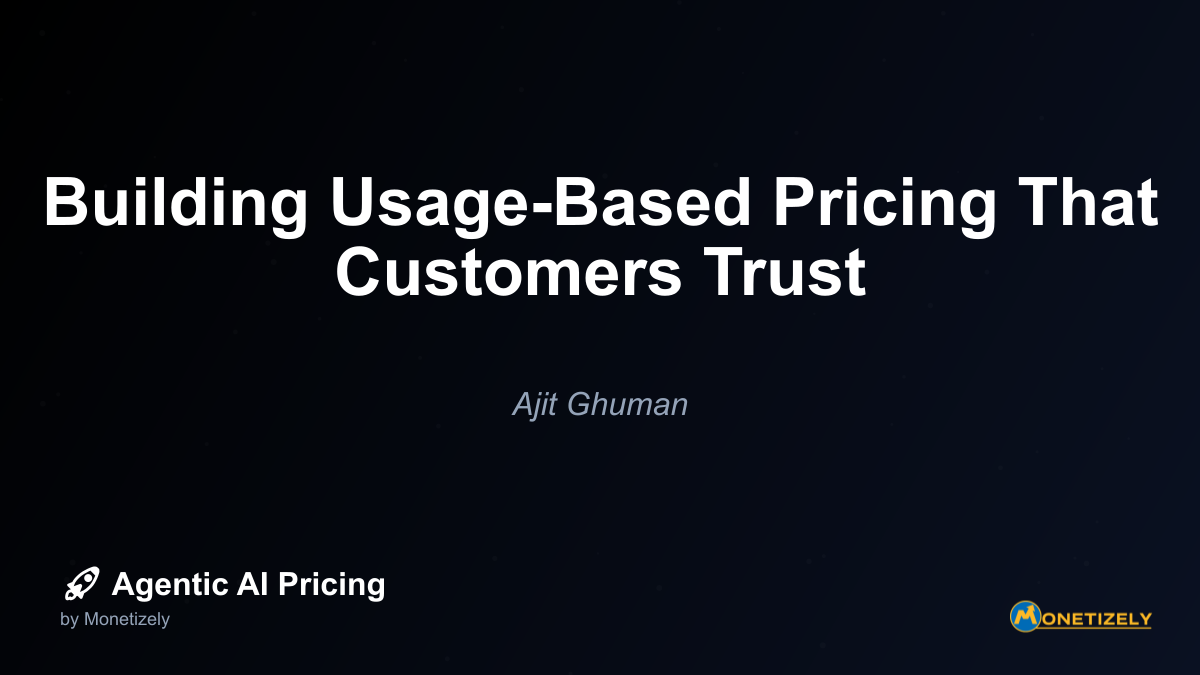· Ajit Ghuman · AI Pricing Models · 12 min read
Pricing Strategy for Multi-Tenant vs. Dedicated AI Deployments
AI and SaaS Pricing Masterclass
Learn the art of strategic pricing directly from industry experts. Our comprehensive course provides frameworks and methodologies for optimizing your pricing strategy in the evolving AI landscape. Earn a professional certification that can be imported directly to your LinkedIn profile.
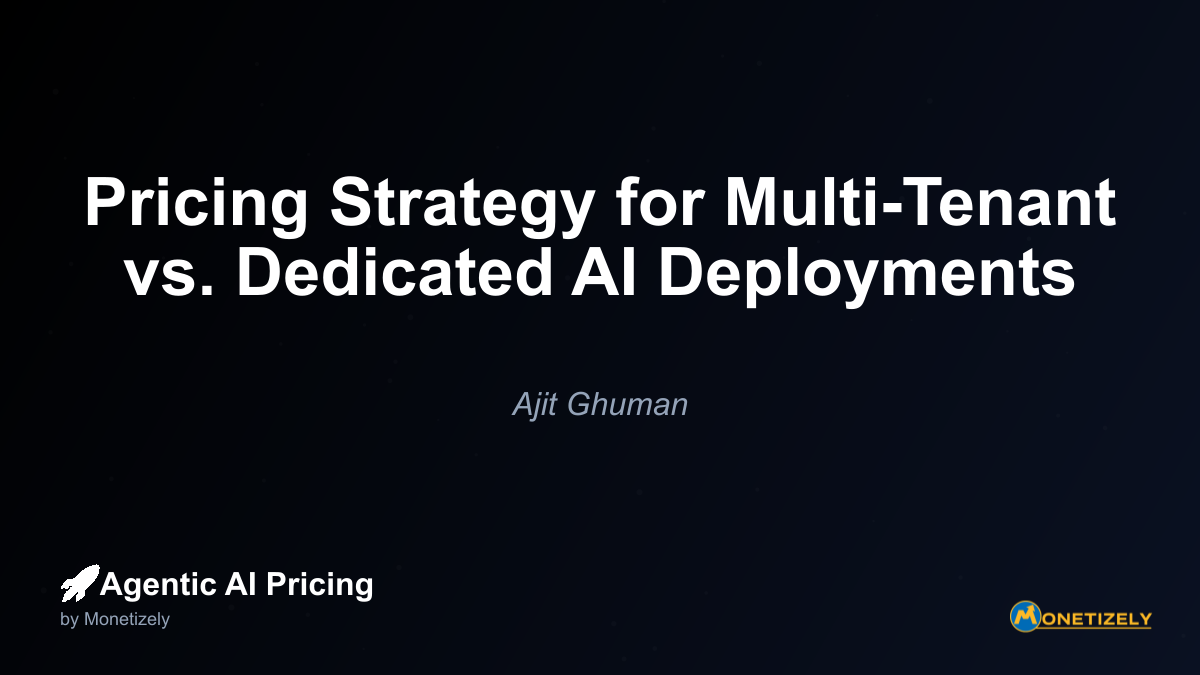
In today’s rapidly evolving AI landscape, organizations face critical decisions about deployment architectures that significantly impact their pricing strategies. The choice between multi-tenant and dedicated AI deployments represents more than a technical decision—it’s a strategic business consideration with profound implications for cost structure, scalability, security, and customer value proposition.
Understanding the Architectural Foundations
Multi-tenant and dedicated AI deployments represent fundamentally different approaches to resource allocation and customer segmentation. Each model creates distinct cost structures that must be reflected in pricing strategies.
Multi-Tenant Architecture: Shared Resources, Shared Economics
In multi-tenant deployments, a single instance of the AI infrastructure serves multiple customers (tenants). Resources—including compute power, storage, and networking—are shared across all tenants, with logical separation maintaining data isolation. This architecture leverages economies of scale through resource pooling.
The economic advantages are substantial:
- Infrastructure costs reduced by 30-40% compared to dedicated deployments
- Resource utilization improved by 60-70%
- Operational overhead reduced by 20-30%
- Lower per-customer implementation costs
However, these benefits come with trade-offs in customization flexibility, potential performance variability during peak usage periods, and more complex security requirements.
Dedicated Deployment: Exclusive Resources, Premium Positioning
Dedicated (single-tenant) AI deployments provide exclusive infrastructure for each customer. This isolation offers enhanced performance consistency, stronger security boundaries, and greater customization potential. Organizations typically choose dedicated deployments for:
- Mission-critical AI applications requiring consistent performance
- Highly regulated industries with strict compliance requirements
- Applications handling sensitive data with enhanced security needs
- Enterprise customers requiring extensive customization
The premium nature of dedicated deployments stems from higher infrastructure costs, increased operational overhead, and the need for specialized management. These factors necessitate higher price points to maintain profitability.
The Economics of Deployment Models: Infrastructure Cost Analysis
Understanding the underlying economics of each deployment model is essential for developing effective pricing strategies.
Infrastructure Cost Breakdown
| Cost Component | Multi-Tenant Deployments | Dedicated Deployments |
|---|---|---|
| Compute | Shared resources with dynamic allocation; 30-40% lower costs through reduced idle capacity | Dedicated resources per customer; higher costs from potential overprovisioning |
| Storage | Pooled storage with logical separation; economies of scale reduce per-GB costs | Isolated storage per customer; higher per-GB costs but enhanced security |
| Networking | Shared bandwidth and infrastructure; lower per-customer costs | Dedicated network pathways; higher costs but predictable performance |
| Maintenance | Centralized updates and maintenance; costs distributed across customer base | Individual instance maintenance; higher per-customer operational costs |
| Scaling | Efficient autoscaling across tenant base; lower costs during usage fluctuations | Customer-specific scaling; potentially higher costs from individual growth patterns |
The cost differential between these models directly impacts sustainable pricing strategies. Multi-tenant deployments enable lower price points while maintaining healthy margins, whereas dedicated deployments require premium pricing to offset higher infrastructure and operational costs.
Strategic Pricing Frameworks for Multi-Tenant AI
Multi-tenant architectures enable several innovative pricing approaches that align with their shared resource model and cost structure.
Output-Based Pricing: Aligning Value and Consumption
Output-based pricing charges customers based on the volume or quality of AI-generated outputs. This approach has gained significant traction in the market:
- Copy.ai uses output-based pricing ($0.02 per generated marketing paragraph), maintaining approximately 95% gross margins while undercutting competitors
- This model aligns pricing with customer-perceived value and directly reflects the variable compute costs of AI inference
- Particularly effective for multi-tenant environments where usage patterns fluctuate widely across the customer base
Token or Credit-Based Models: Balancing Flexibility and Predictability
Token-based pricing provides customers with prepaid credits that can be consumed for AI usage:
- HubSpot’s AI Assistant employs token pricing, offering transparency while shifting cloud cost risk to customers
- This approach requires sophisticated usage dashboards and forecasting tools to help customers manage their token consumption
- Benefits include predictable revenue for vendors and flexibility for customers to allocate AI resources as needed
Tiered Usage-Based Pricing: Scaling with Customer Growth
Tiered pricing structures in multi-tenant environments typically offer escalating features and usage allowances:
- Base tiers provide limited AI functionality at accessible price points
- Premium tiers include more sophisticated AI capabilities, higher usage limits, and enhanced support
- Enterprise tiers may include dedicated resources within the multi-tenant environment
According to research from CloudZero, SaaS vendors increasingly build higher tiers with AI features costing incrementally more, reflecting the additional compute cost per user. This approach has largely replaced unlimited use plans, which have become unsustainable due to per-use cloud expenses.
Off-Peak Pricing: Optimizing Resource Utilization
Some innovative AI providers have implemented time-based pricing variations:
- DeepSeek offers discounted AI processing during off-peak hours
- This strategy optimizes data center utilization and provides cost savings for customers with flexible integration needs
- Particularly beneficial for batch processing AI workloads that don’t require real-time responses
Global Market Segmentation: Adapting to Regional Differences
For global deployments, multi-tenant pricing often adapts to regional cost drivers:
- Premium pricing in high-value markets (North America, Western Europe)
- Entry-level pricing in developing regions
- Adjustments for localization, compliance, and infrastructure investments
This approach recognizes the varying willingness-to-pay across markets while maintaining profitability in each region.
Premium Pricing Strategies for Dedicated AI Deployments
Dedicated AI deployments command premium pricing due to their exclusive resource allocation, enhanced security, and customization capabilities. Several pricing models have emerged as particularly effective for this deployment architecture.
Fixed Subscription-Based Pricing: Clarity and Predictability
Dedicated AI deployments often utilize fixed monthly or annual subscription fees:
- Clear SLA-backed commitments regarding performance, uptime, and support
- Pricing reflects dedicated hardware, maintenance, and compliance overhead
- Predictable revenue for vendors and budgeting for customers
This approach simplifies financial planning for both parties and establishes a premium positioning in the market.
Agent-Based Pricing: Valuing AI Autonomy
A growing trend in dedicated AI deployments is pricing based on the number and sophistication of AI agents:
- OpenAI’s research agent reportedly priced at $20,000/month
- Pricing reflects the value of AI agents performing tasks comparable to skilled human labor
- Particularly suitable for dedicated AI offering specialized, high-value autonomous functionality
According to Boston Consulting Group (BCG) analysis, agent-based pricing is gaining traction as organizations increasingly view AI agents as digital workers that can replace or augment human capabilities.
Project-Specific and Custom Pricing: Enterprise-Grade Solutions
Large enterprises often negotiate bespoke pricing for dedicated AI deployments:
- Pricing ranges from tens of thousands to millions depending on scope and complexity
- Healthcare predictive analytics projects can cost $300,000-$600,000+
- Factors include industry complexity, deployment requirements, and strategic importance
These custom arrangements typically involve detailed scoping, specialized implementation teams, and ongoing strategic partnerships rather than transactional relationships.
Industry-Specific Compliance Premiums
Dedicated deployments in regulated industries often include compliance premiums:
- Healthcare (HIPAA): 15-25% premium for compliant infrastructure and processes
- Financial services (PCI DSS, SOX): 10-20% premium for security and audit controls
- Government (FedRAMP, CMMC): 20-30% premium for specialized compliance requirements
These premiums reflect the additional infrastructure, documentation, and operational costs required to meet regulatory standards.
Cost Allocation and Pricing Challenges in Multi-Tenant Environments
One of the most significant challenges in multi-tenant AI pricing is accurately allocating costs across customers with varying usage patterns.
Cost Visibility Challenges
Multi-tenant environments make it difficult to determine exact per-customer costs:
- Shared infrastructure obscures individual resource consumption
- Dynamic resource allocation complicates attribution
- Varying workload intensities create uneven resource utilization
These challenges can lead to pricing inefficiencies, where some customers effectively subsidize others whose workloads consume disproportionate resources.
Advanced Cost Intelligence Solutions
Modern cloud cost intelligence platforms help address these challenges:
- CloudZero’s clients (including Drift and Symphony Talent) have saved millions in AWS costs through improved cost visibility
- These tools provide granular insights into per-tenant cloud expenses
- Data supports more accurate pricing tier development and margin analysis
According to CloudZero research, organizations deploying multi-tenant AI without cost intelligence tools typically overpay for cloud resources by 30-35% while potentially underpricing their services.
Tenant Isolation and Performance Guarantees
Multi-tenant pricing must also account for the costs of maintaining tenant isolation and performance consistency:
- Data separation through encryption and access controls
- Performance isolation to prevent noisy neighbor problems
- Resource reservation for critical workloads
These mechanisms add complexity and cost to multi-tenant deployments but are essential for enterprise-grade service delivery.
Security and Compliance: The Premium Pricing Justification
Security and compliance considerations significantly impact pricing strategies, particularly for dedicated deployments that command premium prices.
Security Differences and Pricing Implications
| Security Aspect | Multi-Tenant Implementation | Dedicated Implementation | Pricing Impact |
|---|---|---|---|
| Data Isolation | Logical separation through access controls | Physical separation of infrastructure | 15-25% premium for dedicated |
| Encryption | Shared encryption infrastructure | Customer-specific encryption keys | 5-10% premium for dedicated |
| Access Controls | Tenant ID-based access filtering | Complete infrastructure isolation | 10-15% premium for dedicated |
| Security Updates | Centralized application of patches | Individual instance updates | Lower operational costs for multi-tenant |
| Audit Trails | Tenant-specific logging within shared system | Complete system logging | Higher compliance costs for dedicated |
Industry-Specific Compliance Requirements
Different industries have unique compliance requirements that affect deployment choices and pricing:
- Healthcare: HIPAA requirements often necessitate dedicated deployments for patient data processing, commanding a 20-30% pricing premium
- Financial Services: PCI DSS and SOX compliance typically require enhanced isolation, justifying 15-25% higher pricing
- Government: FedRAMP requires extensive documentation and security controls, often driving 25-35% higher prices for dedicated deployments
According to industry research, compliance requirements are the primary driver for dedicated deployment selection in 65% of enterprise AI implementations, despite the higher cost.
Case Studies: Real-World Pricing Strategies
Examining how organizations implement pricing strategies for different deployment models provides valuable insights.
Case Study 1: OpenAI’s Tiered Approach
OpenAI employs a sophisticated multi-tiered pricing model that spans both multi-tenant and dedicated deployments:
- Free tier: Limited access to ChatGPT on shared infrastructure
- ChatGPT Plus ($20/month): Enhanced access on multi-tenant infrastructure
- Team tier: Fixed monthly per-seat pricing for business users
- Enterprise tier: Custom pricing with dedicated capacity and security features
This approach creates a clear upgrade path from accessible multi-tenant offerings to premium dedicated solutions for enterprise customers.
Case Study 2: Anthropic’s Claude AI
Anthropic has implemented a hybrid pricing strategy:
- Free tier: Limited access on shared infrastructure
- Professional/business users: Pay-as-you-go model on multi-tenant infrastructure
- Enterprise contracts: Custom pricing with dedicated resources, advanced security, and support
This model effectively segments the market while aligning pricing with the underlying deployment architecture costs.
Case Study 3: CloudZero Customers
CloudZero reports that its clients have achieved significant cost optimizations:
- Cost savings of over $3 million and 48% reduction in AWS expenses
- Improved granular cost visibility in multi-tenant environments
- Enhanced pricing decisions and profitability through better cost allocation
These results demonstrate how improved cost intelligence can optimize pricing strategies in multi-tenant deployments.
Technical Considerations Affecting Pricing Decisions
Several technical factors directly impact pricing strategies for both deployment models.
Compute Intensity and Resource Usage
AI model size, inference latency, and GPU requirements directly affect marginal costs:
- Large language models (LLMs) require substantial GPU resources, driving higher costs
- Real-time inference demands more expensive infrastructure than batch processing
- Model size correlates with computational requirements and costs
These factors are particularly important for usage-based or output-based pricing models, where understanding the cost-per-transaction is essential for sustainable pricing.
Customization Capabilities and Limitations
The degree of customization available affects perceived value and pricing:
- Multi-tenant deployments typically offer limited customization options
- Dedicated deployments allow extensive customization but at higher cost
- Hybrid approaches may offer modular customization at tiered price points
According to industry research, customization capabilities rank among the top three factors in enterprise purchasing decisions for AI solutions, often justifying premium pricing.
Scalability Differences
Deployment models offer different scalability characteristics:
- Multi-tenant deployments provide efficient autoscaling across the customer base
- Dedicated deployments require customer-specific scaling, potentially increasing costs
- Hybrid approaches may offer dedicated minimum capacity with shared overflow resources
These differences affect both cost structures and customer value propositions, directly impacting pricing strategies.
Customer Perspectives and Willingness-to-Pay Factors
Understanding customer perspectives is essential for effective pricing strategy development.
Enterprise vs. SMB Perspectives
Different customer segments have varying priorities and willingness-to-pay thresholds:
- Enterprises typically prioritize security, compliance, and customization, willing to pay premiums of 30-50% for dedicated deployments
- Mid-market organizations often seek balanced solutions, accepting multi-tenant deployments with enhanced security features at moderate price points
- SMBs generally prioritize affordability and simplicity, preferring multi-tenant solutions with straightforward pricing
According to Monetizely research, enterprises are 3-4 times more likely to select dedicated deployments despite the higher cost, while SMBs overwhelmingly choose multi-tenant options.
Industry-Specific Value Perceptions
Different industries perceive value through distinct lenses:
- Financial services prioritize security and compliance, willing to pay premiums for dedicated infrastructure
- Healthcare values both compliance and customization for specific medical use cases
- Retail and e-commerce often prioritize scalability and cost efficiency, favoring multi-tenant solutions
- Manufacturing typically values integration capabilities and reliability
These variations in value perception should inform industry-specific pricing strategies.
Geographic Variations in Pricing Sensitivity
Willingness-to-pay varies significantly across geographic markets:
- North American enterprises typically accept 15-25% higher prices for premium features
- European organizations often prioritize data sovereignty, increasing willingness to pay for dedicated regional deployments
- Asia-Pacific markets frequently show higher price sensitivity but strong adoption of innovation
- Emerging markets typically require entry-level pricing with growth-based scaling
Effective global pricing strategies must account for these regional variations while maintaining profitability.
Implementation Challenges and Their Cost Implications
The implementation process presents distinct challenges for each deployment model, affecting both costs and pricing strategies.
Multi-Tenant Implementation Challenges
Multi-tenant AI deployments face several implementation challenges:
- Data isolation: Ensuring proper separation between tenant data
- Resource allocation: Balancing compute resources fairly across tenants
- Performance consistency: Preventing “noisy neighbor” problems
- Security boundaries: Implementing robust tenant separation
These challenges increase implementation complexity and cost, which must be factored into pricing models to maintain profitability.
Dedicated Deployment Implementation Challenges
Dedicated deployments present different implementation challenges:
- Infrastructure provisioning: Setting up separate environments for each customer
- Customization management: Tracking and maintaining customer-specific configurations
- Update coordination: Managing updates across multiple independent instances
- Cost inefficiencies: Dealing with underutilized dedicated resources
These challenges typically result in higher implementation and operational costs, necessitating premium pricing.
Migration Considerations
Organizations transitioning between deployment models face additional challenges:
- Moving from dedicated to multi-tenant typically reduces costs but requires data migration and potential feature compromise
- Transitioning from multi-tenant to dedicated increases costs but enhances security and customization
- Hybrid approaches may offer the best balance but add architectural complexity
According to industry research, migration costs can represent 15-25% of the total implementation budget and should be factored into long-term pricing strategies.
Future Pricing Trends in AI Deployment Models (2024-2025)
The AI deployment pricing landscape continues to evolve rapidly, with several clear trends emerging.
Hybrid Tenancy Models
Increasingly sophisticated hybrid approaches are gaining traction:
- Base infrastructure shared across tenants for cost efficiency
- Dedicated resources for specific components based on security or performance needs
- Flexible scaling between shared and dedicated resources based on demand
This approach enables more nuanced pricing models that align costs with specific customer requirements rather than forcing an all-or-nothing choice.
Complexity Scaling Frameworks
Pricing strategies are increasingly incorporating complexity scaling:
- Features and support scale fluidly with pricing tiers
- AI capabilities increase in sophistication at higher price points
- Clear migration paths from SMB to enterprise levels
This approach creates natural growth paths for customers while maintaining alignment between pricing and underlying costs.
Enhanced Cost Intelligence and Transparency
Advanced tools for cost visibility and allocation are becoming essential:
- Granular attribution of resource usage in multi-tenant environments
- Detailed cost breakdowns for dedicated deployments
- Predictive analytics for usage forecasting
These capabilities enable more precise pricing models and better margin management across deployment types.
Consumption-Based Models Alongside Subscriptions
The market is increasingly offering choice between pricing models:
- Traditional subscriptions provide predictability
- Pay-as-you-go options offer flexibility
- Hybrid models with base subsc
Co-Founder & CEO
Ajit is the author of Price To Scale, a top book on SaaS Pricing and is the Founder of Monetizely. Ajit has led and worked in pricing and product marketing at firms like Twilio, Narvar and Medallia. His work has been featured in Forbes and VentureBeat. Ajit regularly consults with software companies from Seed stage to post-IPO on pricing strategy. Ajit is also a highly-rated co-instructor for 'The Art of SaaS Pricing and Monetization' on Maven.
Pricing Strategy Audit
Let our experts analyze your current pricing strategy and identify opportunities for improvement. Our data-driven assessment will help you unlock untapped revenue potential and optimize your AI pricing approach.

